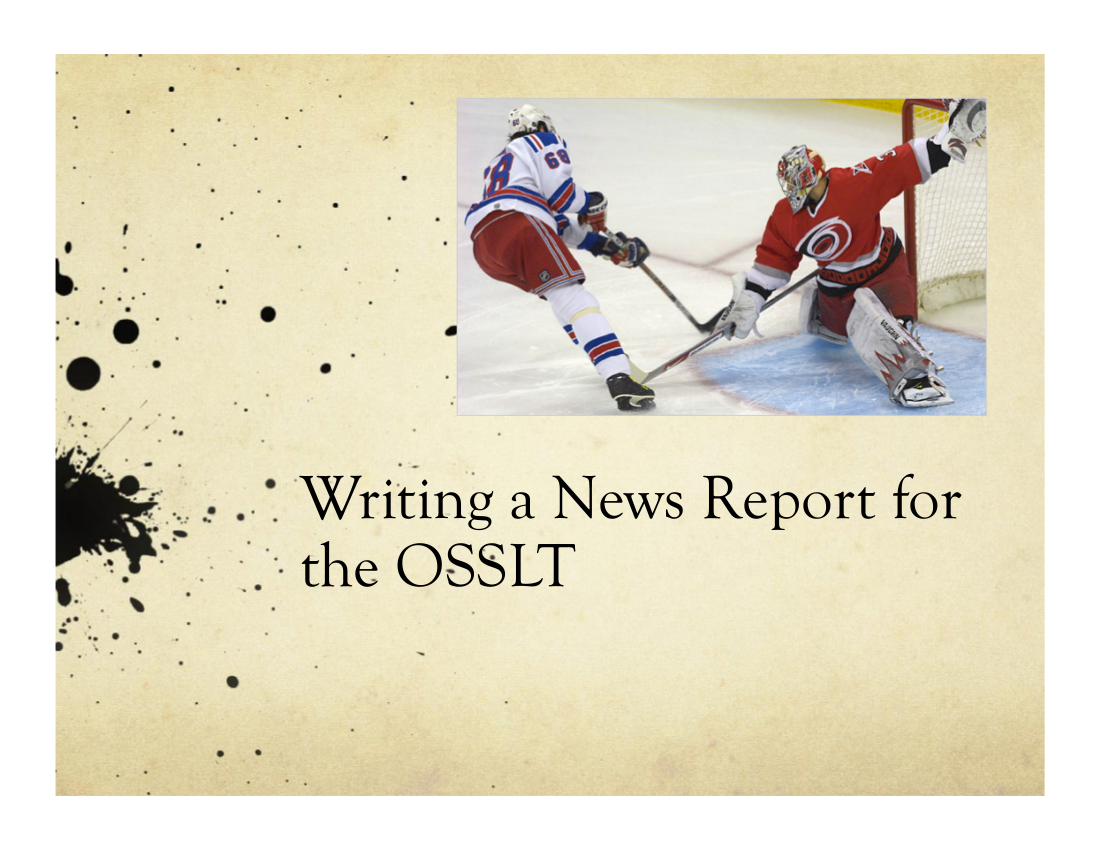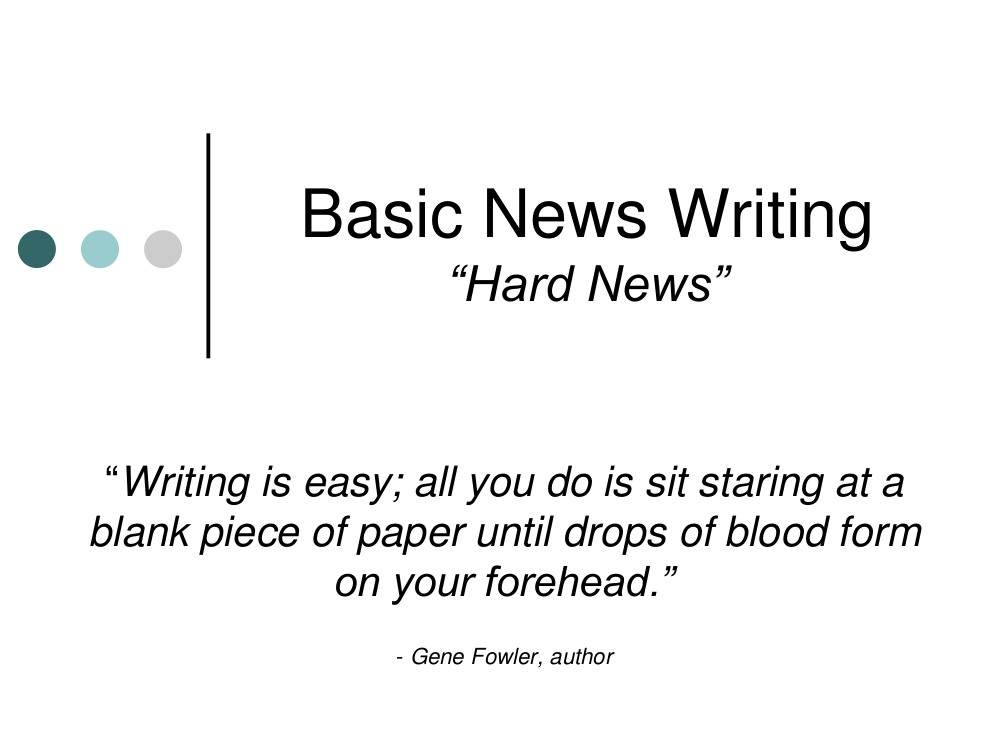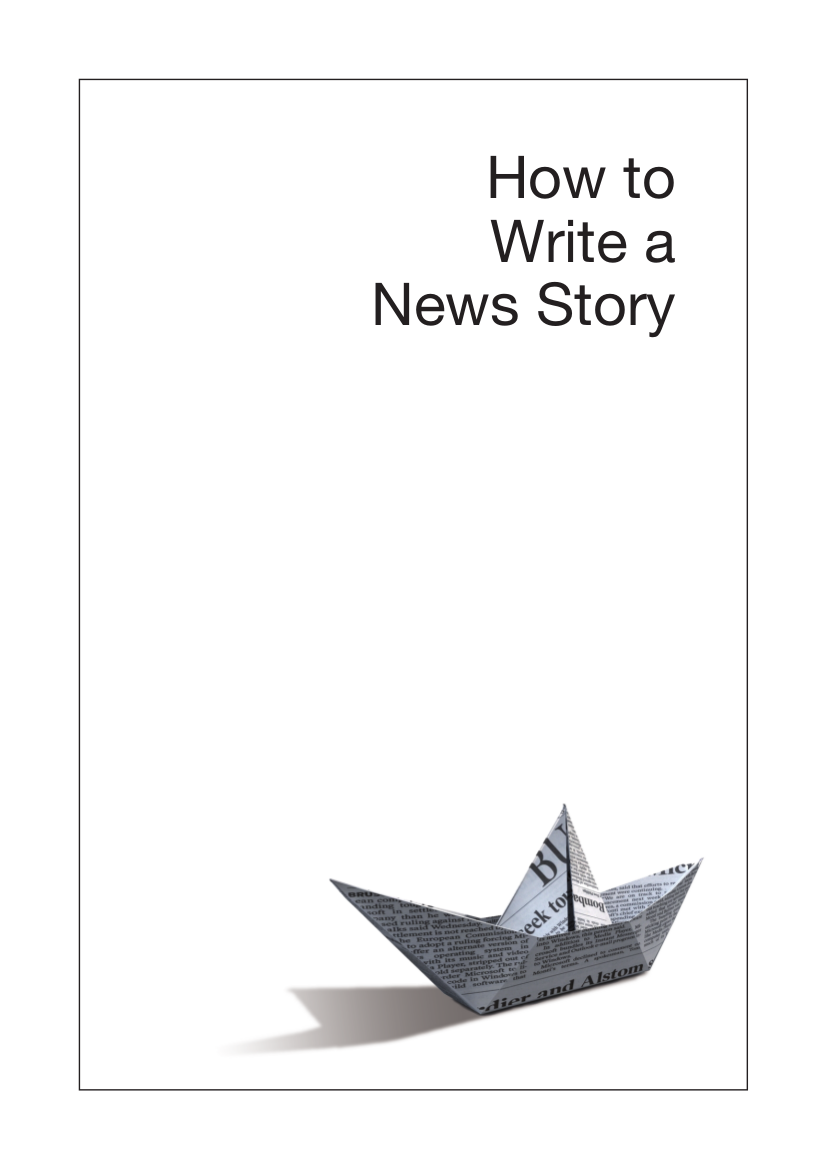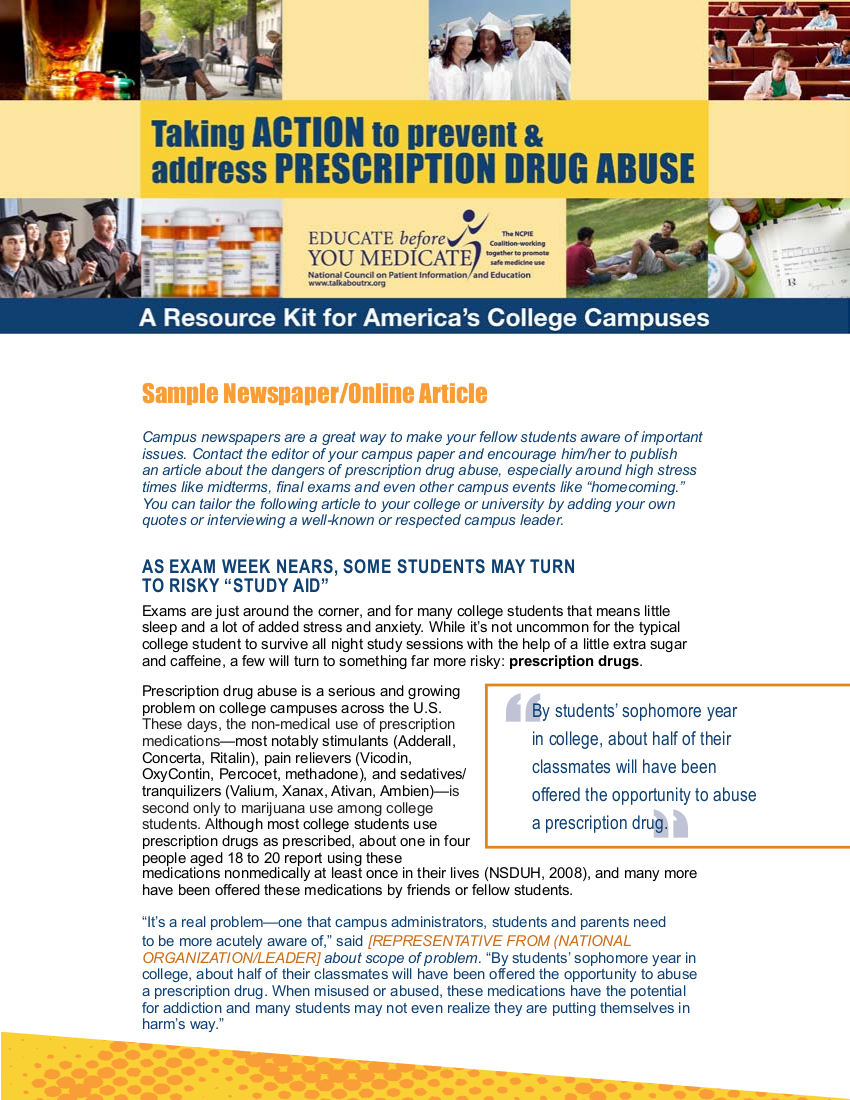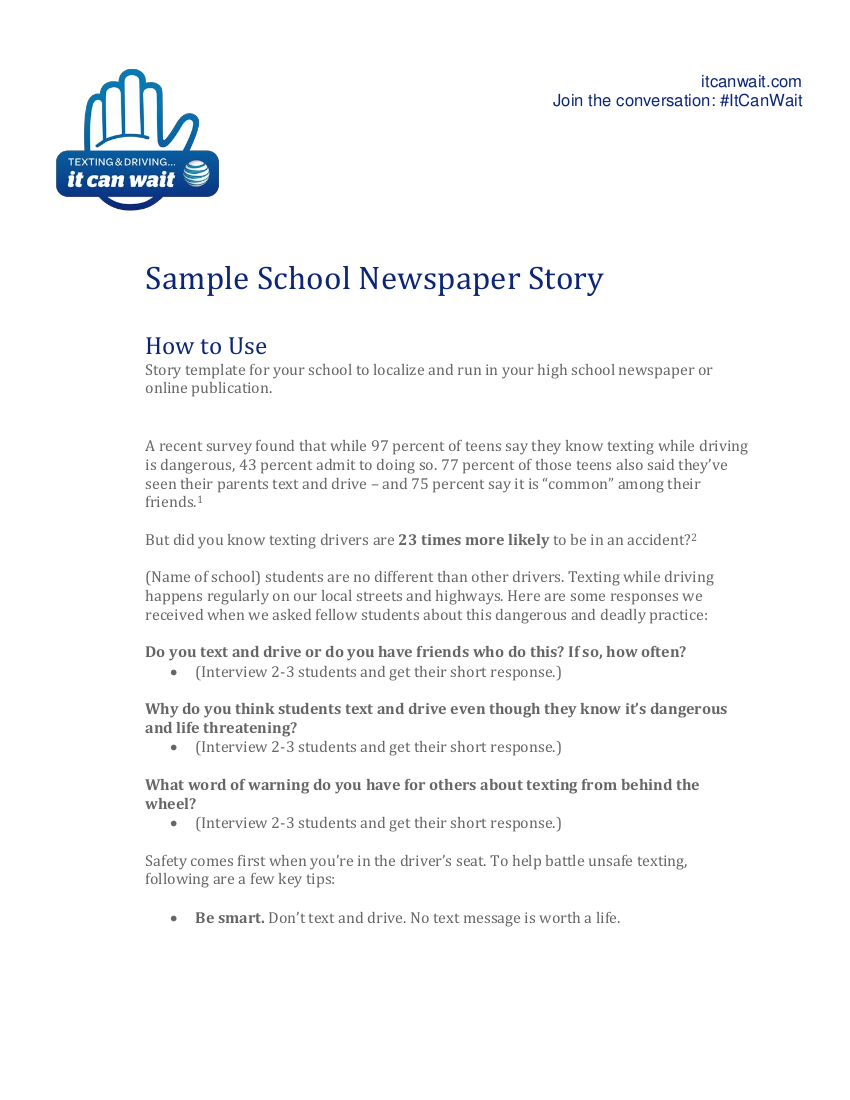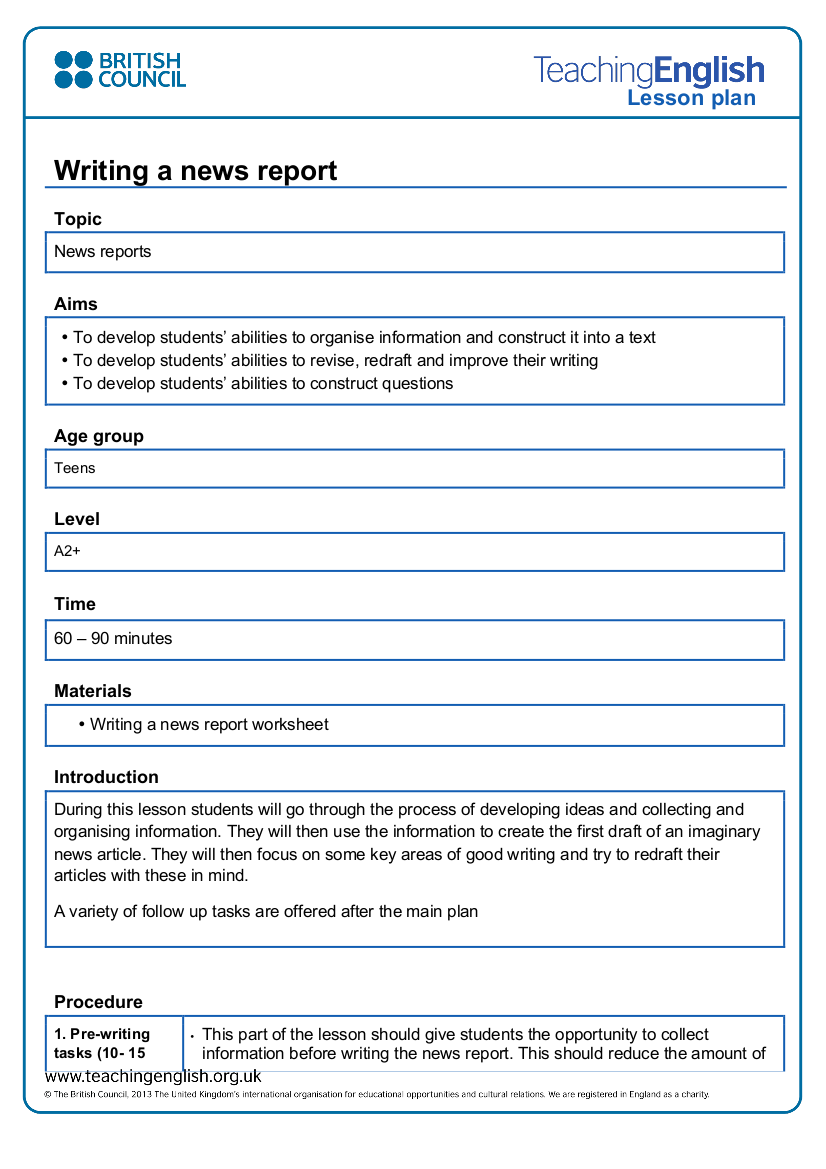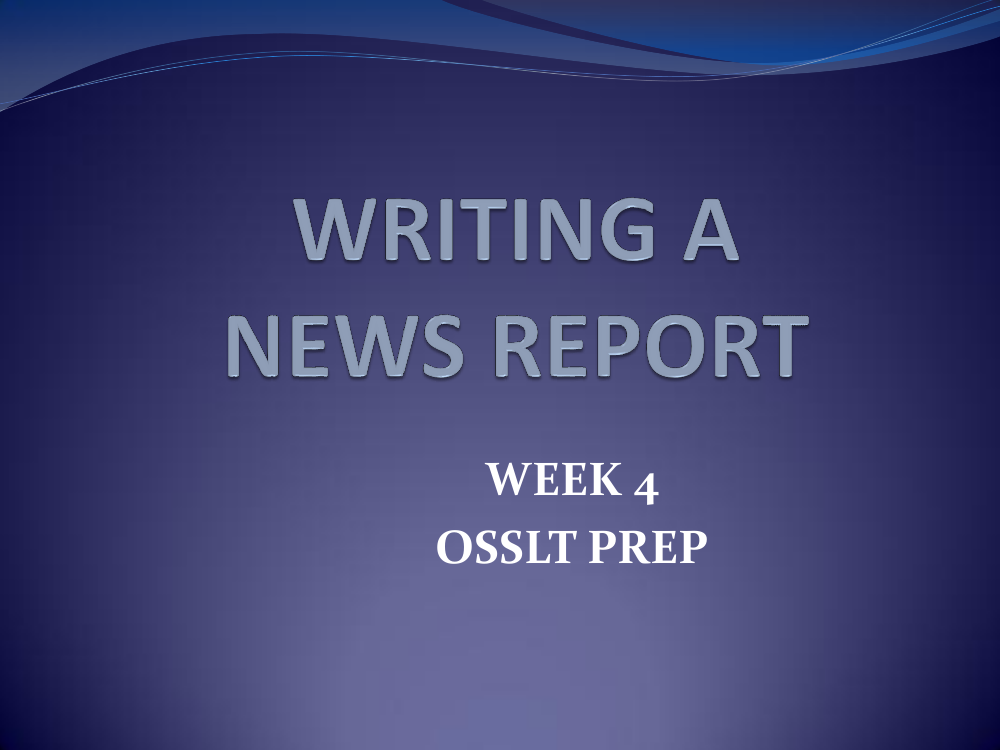15+ News Report Examples to Download
News stories will always have a special place in our lives. It is something that we can totally live without but with its absence, we feel like we have an unquenchable thirst for something we could hardly comprehend and that is our curiosity being left unraveled and unanswered.
Even with the advancements of technology that threatens the survival of newspapers, which are the news stories’ home for the past decades, our search and thirst to know the current events around the world still prevailed and never waned as we had made sure that news will still be accessible even in the digital era. This is why we can still find and read news stories that used to solely inhabit newspapers, on websites, and even on social media. Newspaper companies have even digital counterparts that still enable them to serve the general public relevant news stories.
If reading news stories makes a difference in our lives, then imagine being able to write one that does not simply make a difference in your life but would also make a whole lot of difference to readers across the globe. Do you want to make a difference through news writing? Then you are reading the right article that could help you accomplish this, for we have provided nine news report writing examples as well as news report writing tips that can definitely aid you as you pave your way toward being the catalyst of change in people’s lives. For those looking to further hone their skills, explore our guides on English Report Writing for Students and English Report Writing, offering valuable insights and techniques to elevate your report writing capabilities.
How to Write a News Report?
Writing a news report involves presenting facts about an event, issue, or subject in a factual, unbiased manner. Here’s a step-by-step guide to crafting an effective news report.
Step 1: Choose Your Topic
Select a newsworthy topic that is timely, significant, and of interest to your audience. This could be a local event, a national issue, or an international story.
Step 2: Research Your Topic
Gather information from reliable sources. This may include interviewing witnesses, experts, or officials; checking official reports or documents; and reviewing other media coverage. Ensure your information is accurate and comprehensive.
Step 3: Write a Captivating Headline
Your headline should be clear, concise, and compelling. It should grab the reader’s attention and give them an idea of the report’s content.
Step 4: Craft the Lead
The lead (or lede) is the first paragraph of your report, summarizing the most important aspects of the story. It should answer the who, what, when, where, why, and how questions to give readers a clear understanding of the subject.
Step 5: Develop the Body
The body of your report should provide a detailed account of the story. Organize information logically, usually in order of importance. Use quotes from interviews to add perspective and credibility. Ensure each paragraph flows smoothly into the next.
Step 6: Include Background Information
Provide context to help readers understand the significance of the story. This could include historical background, related events, or explanations of complex issues.
Step 7: Conclude Your Report
End with a paragraph that summarizes the key points of your report or provides information on future developments. Avoid introducing new information in the conclusion.
Step 8: Review and Edit
Check your report for accuracy, clarity, grammar, and style. Ensure it adheres to journalistic standards and ethics. Remove any biased or subjective language.
Formatting Tips
- Use Short Paragraphs: Keeps the content readable and engaging.
- Incorporate Bullet Points or Subheadings: Helps organize information and makes the report easier to scan.
- Include Images or Videos: Visuals can enhance your report and help convey the story more effectively.
- Cite Sources: Always attribute quotes and data to their sources to maintain credibility.
Conclusion
Writing a news report requires careful attention to detail, objectivity, and the ability to convey information clearly and concisely. By following these steps and tips, you can create a compelling news report that informs and engages your audience.
News Report Samples
- News Report For Kids
- News Report For Students
- News Report For Sports
- News Report For School Project
- News Report For This week
- News Report For Health Alert
- News Report For Technology Frontier
- News Report For Environmental Watch
- News Report For Economic Trends
- News Report For Global Perspectives
- Weather Report
All About News Report Writing
Basic News Report Writing
How to Write a News Story
News Report Writing Literacy Test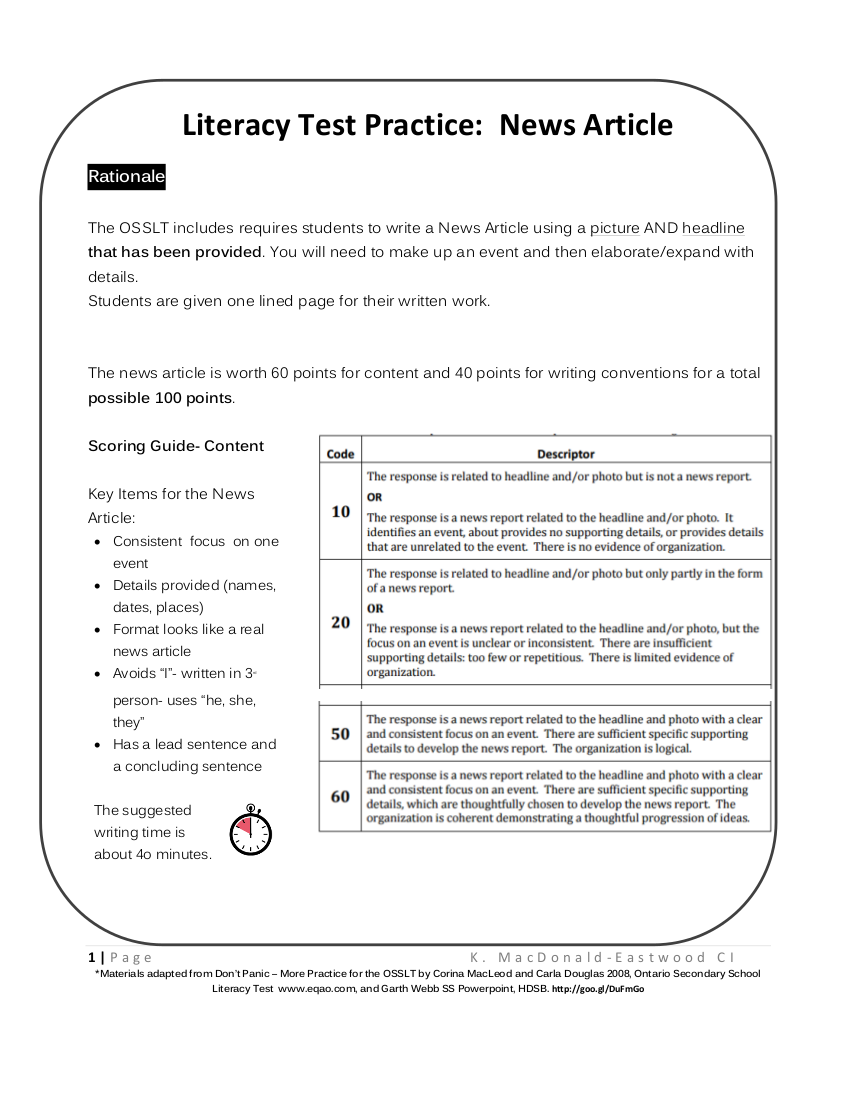
Download
News Report Writing Task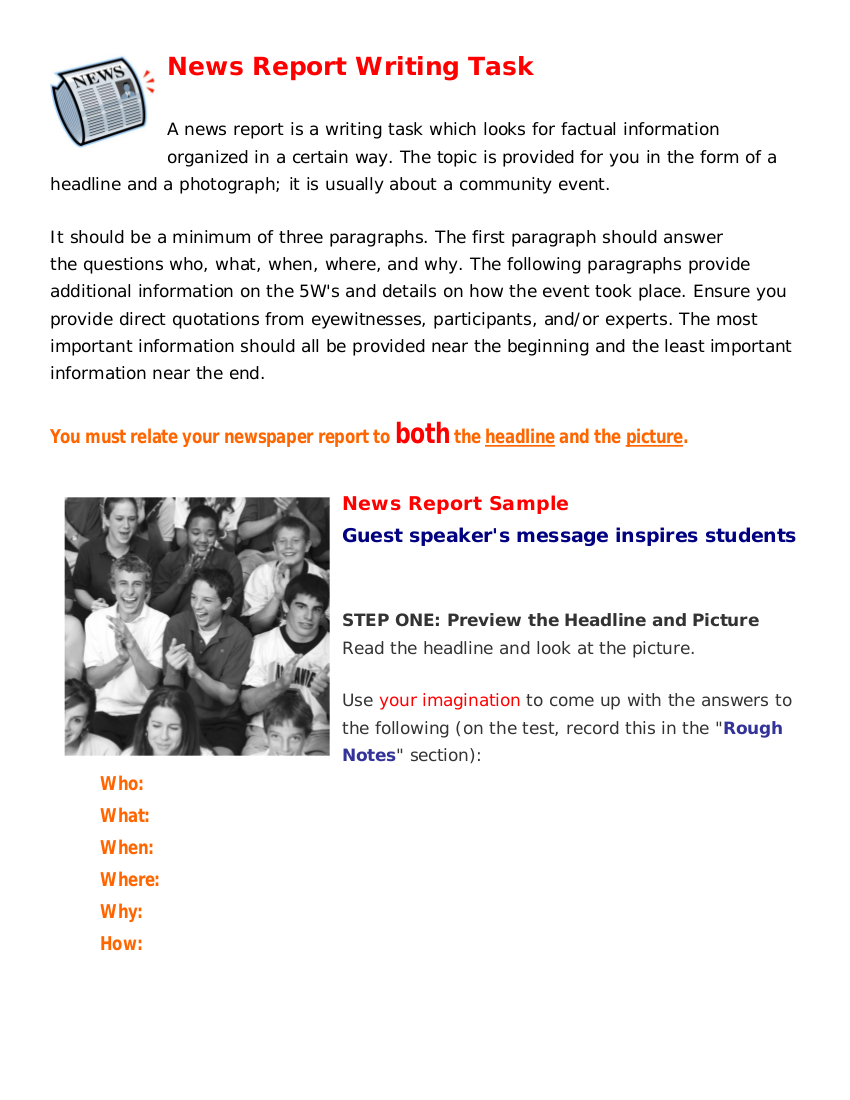
Download
Tips for Better News Report Writing
Here are a few additional tips that can also apply to write in general:
- Never be too verbose. Your words do not have to be too complicated because, if you are indeed a news report writer, you should never ever make it as a medium for you to showcase your wide vocabulary or your excellent command of the English language. When writing news reports, you have to be direct without compromising the quality and the relevant information. You have to make sure that you have chosen your words and construct your sentences properly so you will be able you construct a news story that is concise and brief but still informative.
- Maintain only less than 25 words when constructing your sentences and also make sure that you keep and contain only a single idea all throughout your sentence. Anything more will always be considered as too wordy and it will always be an extra effort to the readers of the general public.
- Just use a simple subject-verb-object form. Do not complicate things. News just have to be simple.
- Never use a lot of commas. Again, keep things simple. Break down unnecessary compound or complex sentences into different sets of sentences.
- Do not repeat the same information in succeeding paragraphs. In each of the paragraph that you create, always introduce a new information that will aid or support the initial information mentioned in the preceding paragraph.
- Having more than three prepositional phrases into a single sentence is never ideal.
- Putting more than three numbers in a single sentence does not look good and convenient for the readers. If the numbers are important, you can have it on a tabular form or in a list form. This can help in making your news report convenient and comfortable to read.
- Keep in mind that writing a news report is all about the people you are writing about and the people, the general public, you are writing for—it will never be about a written piece about you as a writer or writing for your personal interest. So this means that you should make sure that you have focused on one or more of the affected individuals.
- When writing a news story, always make sure that you have an angle and a perfect angle at that. Make sure that the angle you have chosen gives an opportunity for all the sides of the story to be heard and not just one side or else you are considered as bias and your credibility will be questioned.
- Do not be afraid to have an angle for the fear that you will be considered as biased. Keeping an angle to your new story is a standard technique and it is not necessarily bad since this highlights the purpose and the main focus of your news story.
- Always keep it objective and, obviously, never subjective. Always be nonpartisan. As mentioned above, you just have to make sure that you have tried to cover all sides of the story and never just one or two. For example, there was a road accident wherein a car crashed into a motorcycle. Do not only take into account the statements of the driver of the car and the driver of the motorcycle—you also have to get the statement of the traffic enforcers, the police who responded to the incident, and yes, including the onlookers or the ones who were able to witness the incident.
- Speaking of getting a statement, always make sure that you will be able to directly quote the people’s statement. Do not add anything just to make your story more interesting because you are not anymore writing a news story but you are already writing fiction. If you fear that you will not be able to catch on what your interviewee had said, make sure you record whatever he or she says.
- Speaking of interviews, if it is a scheduled or planned, phone call or face-to-face interview, you have to make sure that you have asked permission that you will are to record your interview with that person as there are some countries who would consider recording any kind of conversation or interview as illegal.
- You are writing a news story and not a feature story so this means that you should not get flowery when it comes to describing a newsworthy event. Just write what happened. Write it as it is and do not any more try writing in a heavily descriptive language as it is not really necessary.
Sample Online News Story
Sample School News Story
Teaching How to Write a News Report
Writing a News Report
The Basic Components of a News Story
Curious about what makes a well-written and interesting news stories? We introduce you to the basic components of a news story:
1. The Headline
The headline is a part of a news report where there will be at least one or two lines of the summary of the entire content of a news story or it simply tells the readers what the story is all about.
Your headline is actually the part of your news report where you are to make or break because of the fact that this is also the part where you should make sure that you have grabbed the attention and interest of the reader until the rest and the end of your news story. However, the headline does more than grabbing the attention of your reader because once your headline is effective, it could already communicate the full message your entire news story intends to share.
Headline Writing Tips
- Ensure accuracy
- Keep it short and simple (KISS)
- Don’t repeat the lead on the headline
- Be direct; do not use flowery words
- Always write in the active voice and write in present tense
- Avoid any bad breaks and always fill the space.
- Ensure your headline is appropriate to the news story
- Always know where to capitalize
2. The Lead
The lead, which is often spelled as lede, is the part of a news story that is often defined as the first sentence of every news story. The lead of news story is the mark of the beginning of the story where it contains the most important facts and details of the news story or it simply answers some of the Wh+H questions, specifically the who, what, where, and when. A standard lead should be no more than 25 or 30 words. Once you will be able to write a strong lead, your readers will be unconsciously compelled to read the rest of the news story.
Types of Leads
- Summary lead
- Single-item lead
- Quote lead
- Cartridge lead
- Question lead
- Analogy lead
- Distinct incident, picture, or contrast lead
- Cosmic lead
3. The Body
The body of a news report is the part where one will be able to read more details and information related to the news report.
This part of a news story would often expound and discuss the answers to the rest of the Wh+H questions “Why?” and “How” of the new story. This is where the supporting details of the lead will be written and this is where you will also where you can find the quotes stated by the people being interviewed for the story. The body of a newspaper is usually written in an inverted pyramid form wherein the most important or the meatiest information or details is found at the beginning and followed only by the least but still important details.
4. The Tail
The tail of a news report is the part where one will be able to read the less important information, which is usually omitted by the editors in the event that there is not anymore enough space left in the newspaper.
We hope that with the help of these examples and tips that you will be able to write effective news stories for the world to read and benefit from.
Types of News Reports
- Breaking News: Immediate coverage of events as they unfold, often unexpected or developing stories.
- Feature Stories: In-depth articles that explore topics or issues in detail, focusing on background, context, and human interest.
- Investigative Reports: Comprehensive reports that uncover hidden facts and information, often involving extensive research and evidence-gathering.
- Editorials: Opinion pieces that reflect the viewpoint of the editor or publication, offering analysis and commentary on current issues.
- Business News: Coverage of the economy, financial markets, and business sectors, including trends, mergers, acquisitions, and corporate news.
- Sports News: Reports on sports events, athlete profiles, game results, and analyses, covering various sports and competitions.
- Entertainment News: News about the entertainment industry, including movies, music, television, celebrity updates, and cultural events.
- Science and Technology News: Articles on advancements, discoveries, and trends in science and technology, including health, environment, and innovation.
- Weather Reports: Updates on weather conditions, forecasts, and impacts, including storms, climate changes, and seasonal reports.
- Political News: Coverage of political events, elections, government policies, and political figures, focusing on domestic and international affairs.
- Health News: Reports on health issues, medical research, wellness trends, and public health campaigns.
- International News: Coverage of global events, international relations, conflicts, and significant developments around the world.
- Travel News: Information on travel destinations, trends, tips, and advisories for travelers, including cultural insights and exploration.
- Lifestyle News: Articles covering lifestyle topics such as fashion, food, home, and garden, focusing on trends and advice.
How do you write a news report?
Research your topic thoroughly, gather credible sources, and structure your report with a clear headline, an engaging lead that covers the 5 Ws (Who, What, Where, When, Why), detailed body paragraphs with quotes and evidence, and a concise conclusion. Use an objective tone and active voice.
What is an example of a news?
“Local High School Wins National Science Competition: Students from Springfield High School clinched the top prize at the National Science Fair, showcasing an innovative project on renewable energy solutions.”
What are the 5 parts of a news report?
Headline: Captures the essence of the story.
Lead: Summarizes the main points covering the 5 Ws.
Body: Provides detailed information, including quotes and background.
Conclusion: Wraps up the story, sometimes suggesting future developments.
Byline and Date: Indicates the author and date of the report.
How do you start a good news report?
Begin with a strong lead that succinctly presents the most important information (the 5 Ws) to grab the reader’s interest. Ensure it’s clear, concise, and compelling to make the audience want to read on.



